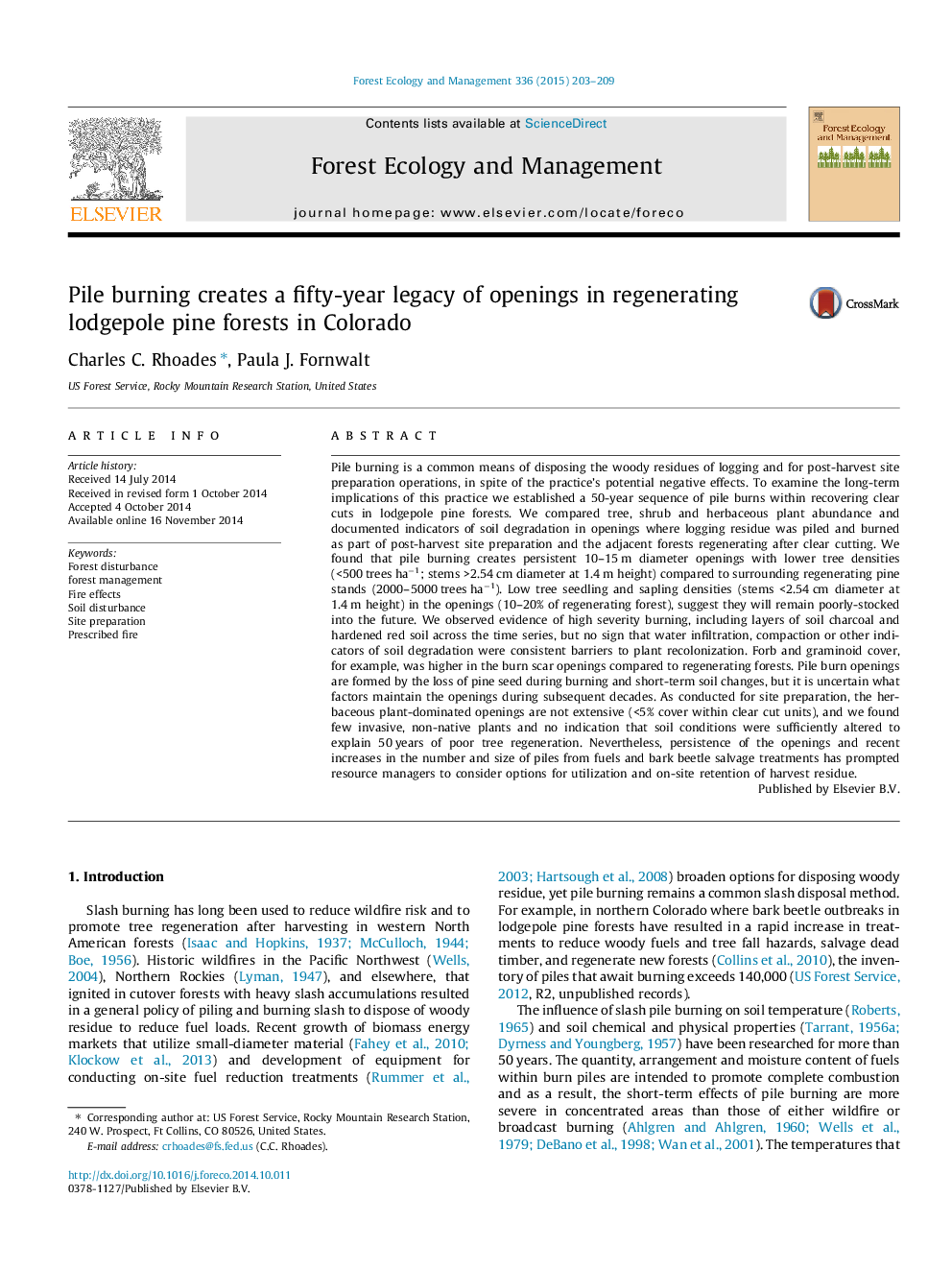| کد مقاله | کد نشریه | سال انتشار | مقاله انگلیسی | نسخه تمام متن |
|---|---|---|---|---|
| 86431 | 159187 | 2015 | 7 صفحه PDF | دانلود رایگان |
• Pile burning creates 15 m diameter openings within regenerating clearcuts.
• The herbaceous plant dominated openings persist for at least 50 years.
• Soil degradation does not represent a significant barrier to plant recovery.
• It is uncertain what combination of factors maintain the openings.
Pile burning is a common means of disposing the woody residues of logging and for post-harvest site preparation operations, in spite of the practice’s potential negative effects. To examine the long-term implications of this practice we established a 50-year sequence of pile burns within recovering clear cuts in lodgepole pine forests. We compared tree, shrub and herbaceous plant abundance and documented indicators of soil degradation in openings where logging residue was piled and burned as part of post-harvest site preparation and the adjacent forests regenerating after clear cutting. We found that pile burning creates persistent 10–15 m diameter openings with lower tree densities (<500 trees ha−1; stems >2.54 cm diameter at 1.4 m height) compared to surrounding regenerating pine stands (2000–5000 trees ha−1). Low tree seedling and sapling densities (stems <2.54 cm diameter at 1.4 m height) in the openings (10–20% of regenerating forest), suggest they will remain poorly-stocked into the future. We observed evidence of high severity burning, including layers of soil charcoal and hardened red soil across the time series, but no sign that water infiltration, compaction or other indicators of soil degradation were consistent barriers to plant recolonization. Forb and graminoid cover, for example, was higher in the burn scar openings compared to regenerating forests. Pile burn openings are formed by the loss of pine seed during burning and short-term soil changes, but it is uncertain what factors maintain the openings during subsequent decades. As conducted for site preparation, the herbaceous plant-dominated openings are not extensive (<5% cover within clear cut units), and we found few invasive, non-native plants and no indication that soil conditions were sufficiently altered to explain 50 years of poor tree regeneration. Nevertheless, persistence of the openings and recent increases in the number and size of piles from fuels and bark beetle salvage treatments has prompted resource managers to consider options for utilization and on-site retention of harvest residue.
Journal: Forest Ecology and Management - Volume 336, 15 January 2015, Pages 203–209
